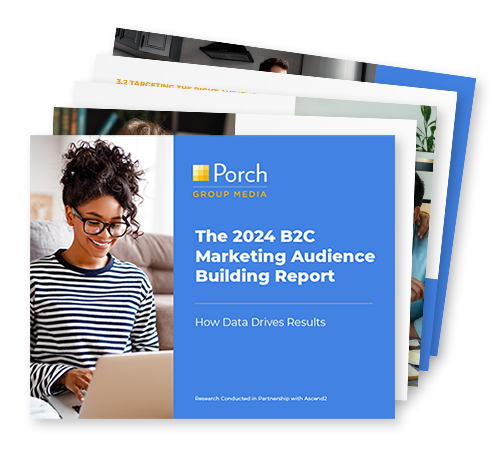Your target audience is the cornerstone upon which your entire marketing strategy is built. It determines the direction of your campaigns, the content you create, and the channels you use to deliver your message.
However, in a recent study by Hubspot, just 42% of marketers know the basic demographic information of their target audience, like their name, gender, and location. And the gap is even larger for other insights into interests, hobbies, values, and more.
- Less than half of marketers know their audience’s interests and hobbies, shopping habits, the products they are interested in buying, their purchase history, and where they consume content.
- Only 31% know the online communities their target audience is a part of and even less know the challenges they are facing.
- Just one-fourth of marketers know the social causes their target audience cares about – a huge missed opportunity when it comes to expressing your brand’s values, especially when marketing to Gen Z and Millennials.
Challenges to Understanding Your Target Audience
Finding your target audience is not without challenges. According to Hubspot’s research, increased data privacy regulations that reduced access to consumer data was cited as the top challenge for 21% of marketers.
Other top challenges respondents cited included:
- 20% – Consumers are less trusting with their personal data
- 19% – Rapid changes to audiences’ lives
- 19% – Lack of information on their shopping habits
- 18% – Data doesn’t integrate well with marketing tools
- 17% – Lack of information on where they consume content/media
- 17% – Poor data quality
- 17% – Lack of information on social causes they care about
- 17%- Lack of information on their pain points and challenges
Tips on Building Your Target Audience
Start with Your 1st-Party Data
Before you can effectively build your target audience, you need to understand the data you have at hand. Your first-party data is the information you collect directly from your customers and interactions with your brand. It includes data from various touchpoints, such as websites, social media profiles, email lists, and customer relationship management (CRM) systems.
Here are some common types of first-party data:
- Contact information such as email addresses, phone numbers, mailing addresses, and social media handles.
- Demographic data such as age, gender, marital status, income level, education level, and occupation.
- Behavioral data such as website visits, pages viewed, products searched for, and items added to the cart.
- Purchase history such as previous purchases, order frequency, transaction amounts, and product categories bought.
- Subscription and membership data such as subscriptions to newsletters, memberships, loyalty programs, and account preferences.
- Social media engagement such as likes, shares, comments, and follows on social media platforms.
- Customer support interactions such as customer service chat logs, support tickets, and call recordings.
- Email engagement such as open rates, click-through rates, and email subscription preferences.
Implement a Marketing Platform to Analyze Your Data and Define Your Target Audience
With so much data at hand, marketers are often challenged to make sense of it. A marketing platform plays a pivotal role in integrating and analyzing data for businesses. It serves as your central hub where data from various sources including customer databases, email campaigns, and social media interactions, can be consolidated, processed, and analyzed.
Here’s how a marketing platform can be used to help you define your target audience:
- Data Collection: A marketing platform allows you to gather data from disparate sources and consolidate it in one place. This process includes importing data from your CRM (Customer Relationship Management) system, email marketing software, and social media platforms
- Data Cleansing: Raw data often contains inconsistencies, errors, or missing values. A marketing platform enables data cleansing and transformation, helping to standardize formats, correct errors, and fill in missing information. This ensures the accuracy and quality of the data being integrated.
- Audience Segmentation: With integrated data, you can identify patterns, trends, and common traits to segment your audience. Consider using criteria such as demographics, behaviors, and interactions. For example, do certain groups show more interest in your products or services?
All-Party Data: Add Additional Data Sets to Better Define Your Target Audience
To gain a deeper understanding of your audience, you need to move beyond first-party data and embrace an all-party data approach. First-party data is the foundation for your audience and is the most valuable. However, an all-party data approach encompasses first, second, third, and zero-party data for broader and richer audience insights.
Here is an overview of the additional data types:
Second-Party Data
Second-party data is essentially someone else’s first-party data. It’s data shared or exchanged between two organizations with a mutually beneficial interest. Partnering with a trusted source, you can gain access to their audience data to complement your own.
Examples include websites, apps, or surveys.
Third-Party Data
Third-party data is sourced from external providers, often aggregating data from various sources. This data can include demographic information, purchase behavior, online activity, and more. When integrated with your first-party data, third-party data offers several advantages:
- Third-party data enriches your audience profiles with additional insights. For example, it can provide detailed demographic information, such as income levels, education, or household size, allowing for more targeted marketing.
- With a broader dataset, you can segment your audience more effectively, creating highly specific customer segments based on a wide array of characteristics.
- Third-party data can help you conduct market research by providing valuable insights into industry trends, competitive landscapes, and potential market gaps.
Zero-Party Data:
Zero-party data is voluntarily provided by customers. It’s the most accurate and trustworthy form of data since it comes directly from the individuals themselves. Examples include feedback forms and preference centers where customers share their preferences, interests, and personal information.
Zero-party data provides a goldmine of information directly from your audience. Leveraging this data allows for hyper-personalized marketing efforts, ensuring that your messages align perfectly with individual preferences.
Your audience is the cornerstone of marketing success and serves as the foundation for connecting with the right people at the right time with the right message. Remember, it’s not just about finding your audience but it’s about forging meaningful relationships with them to carry your business forward.





